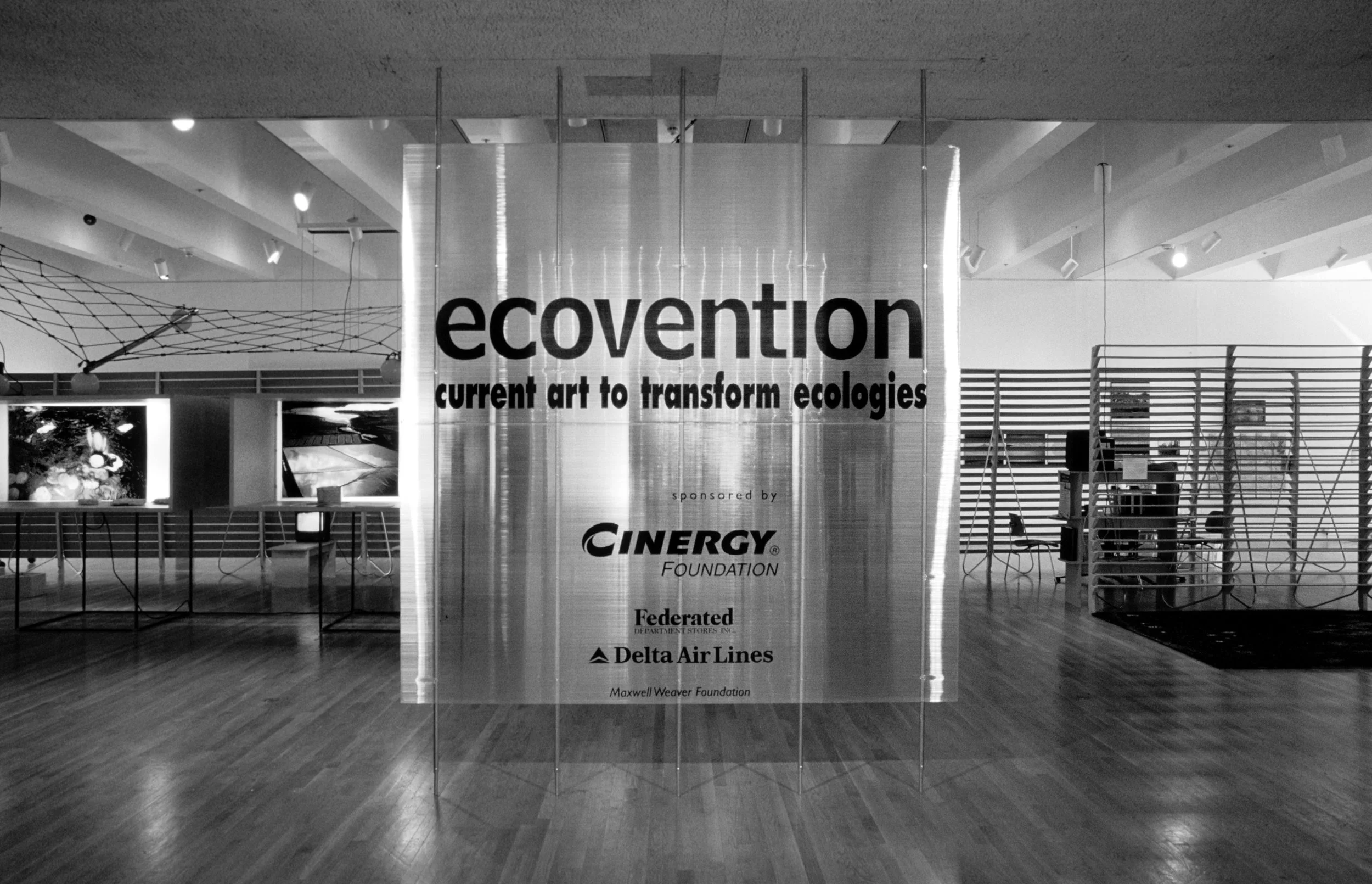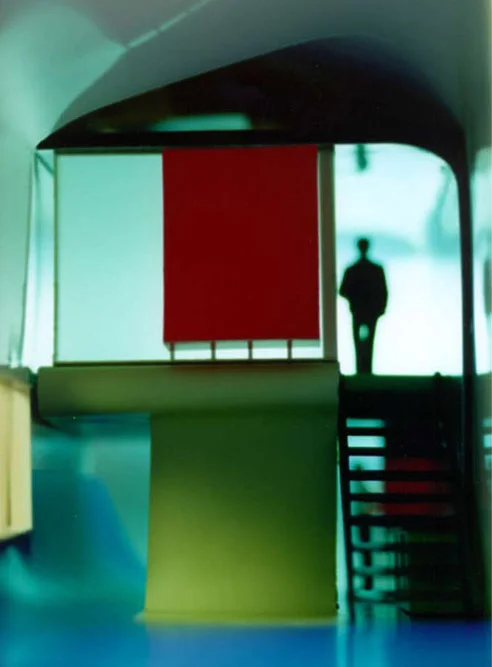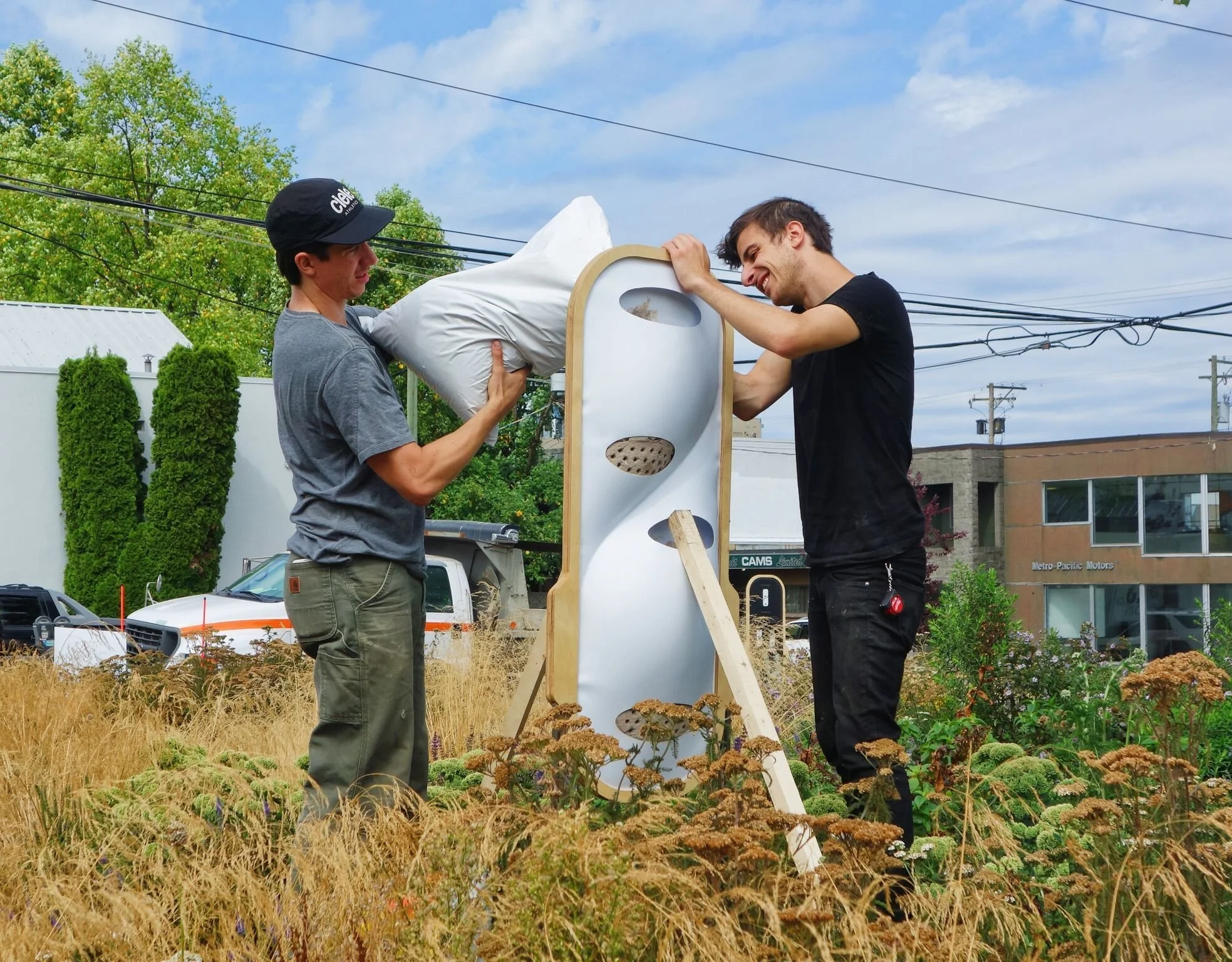Ecoventions
In early 2002, we collaborated with Sue Spaid, curator at the Contemporary Arts Center in Cincinnati, Ohio, to design and construct an exhibition of environmental art titled “Ecoventions”. Ms. Spade asked us to build an organizing display wall for the exhibition that was very inexpensive, temporary, and built with volunteer labor.
The image of a simple ecological intervention, a snow fence, provided us with a strong visual reference for the project. We proposed a variation on the snow fence that could define a variety of spaces and programmed functions as well as guide viewers through the exhibition. This emerged as a continuous surface, changing from open to closed, using a variable support piece at 4-foot intervals. By allowing the slats to subtly twist from vertical (closed) to horizontal (open) along the 76-foot length of the wall, we were able to maintain surface continuity. Closely spaced vertical slats created dark areas for viewing projected imagery, where horizontal slats with large gaps created light filled zones suitable for viewing sculptural artwork.
In order to accommodate the twisting slats, each support spline had a unique profile, sloping from vertical to horizontal at a rate of 5.625° per support. After considering and testing a variety of techniques for constructing the variable support pieces, we finally settled on a 1 ½” laminated plywood spline that was fabricated using a computer aided milling machine. We drew each spline for the fabricator, minimizing waste by organizing the cuts on 4’ x 8’ panels prior to fabrication. For the splines’ supporting members, repetition prompted an alternative, low-tech approach. We formed 8-foot lengths of ½” round EMT conduit using an off-the-shelf conduit bender to create the sixty supporting legs for the splines. Finally, 4’ x 8’ sheets of ½” MDF, ripped down to 3”, created the fence slats. At the end of the wall, the CAC required 3 large light boxes to display transparencies. We constructed these of standard 3’ x 6’-8” hollow core doors, bolted together, and supported on welded steel frames.
Conceptually, our investigation centered on the relationship between design and technique. We recruited four graduate students to participate in the design and construction of the project. Starting with the snow fence image, we explored a variety of schemes through playful material experimentation, iteration, and full-scale mock-ups. Students communicated directly with fabricators and suppliers, constantly checking for budget and schedule alignments. By embedding our work in tight, real world constraints, yet remaining critical and inquisitive throughout the design and fabrication process, we endeavored to balance project realities with conceptual rigor.
The benefits of the project to the students were numerous and varied. First, and most obviously, they gained insight into the real qualities of materials and construction techniques. We feel that placing architecture students in the field and encouraging them to build with their own hands is an invaluable experience in their development as designers. Second, they began to recognize that design decisions are made at multiple scales and phases throughout a project, not just at the drawing board or the computer screen. Many decisions depended on material availabilities and cost constraints. The students also had the opportunity to collaborate with curators, artists, and sculptors. The alternative perspectives gleaned from this outside input were refreshing to the students. Finally, the project bolstered the students’ self-confidence through public recognition at the exhibition opening as well as subsequent awards and publications, including a Design Distinction Award in I.D. Magazine’s 2003 Annual Design Review.












